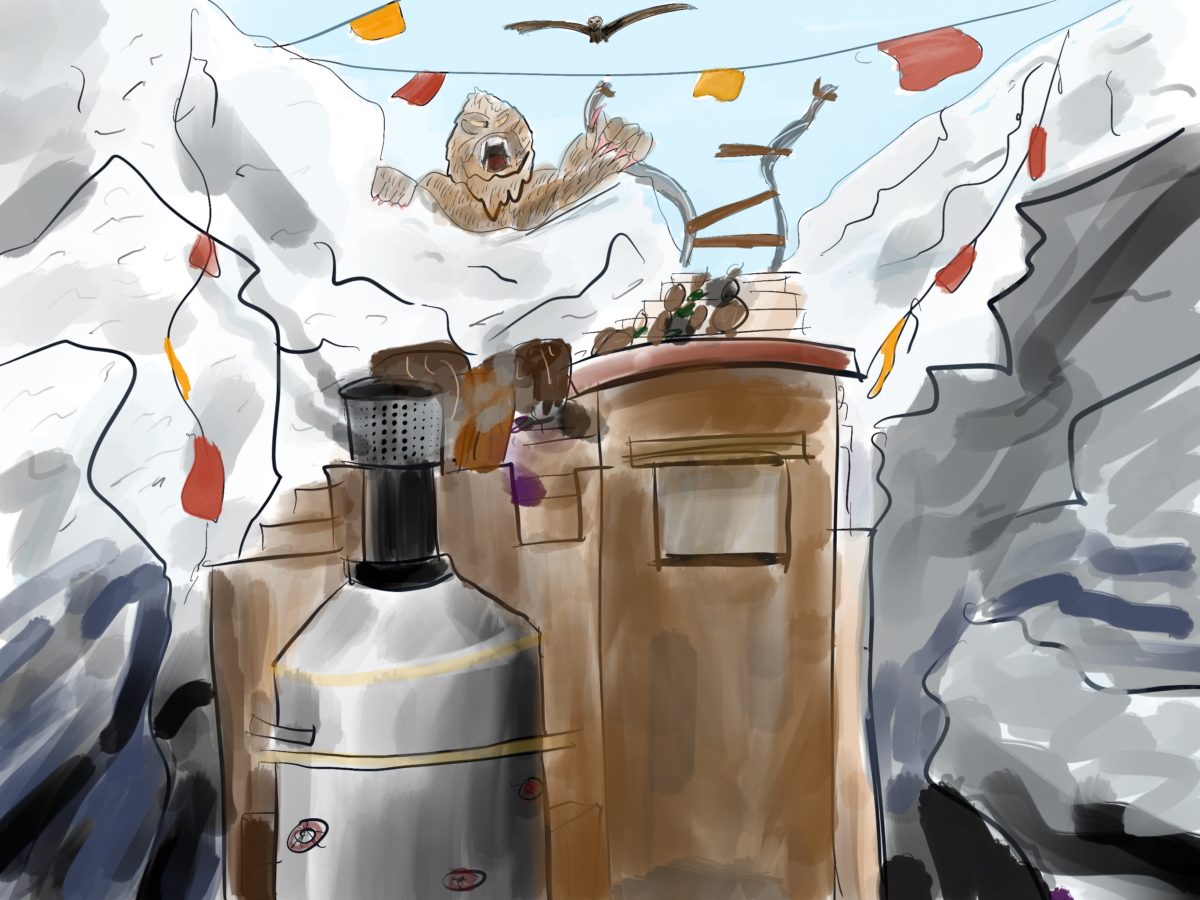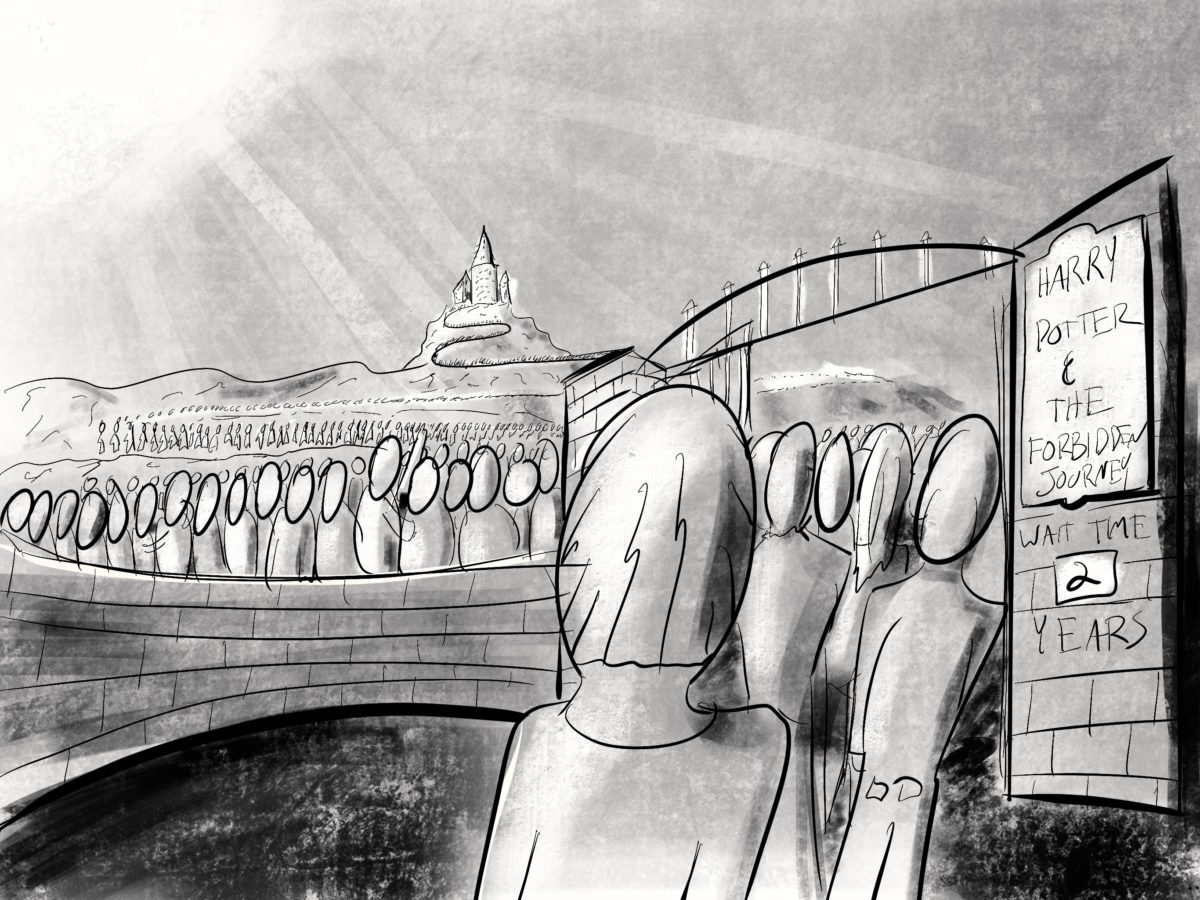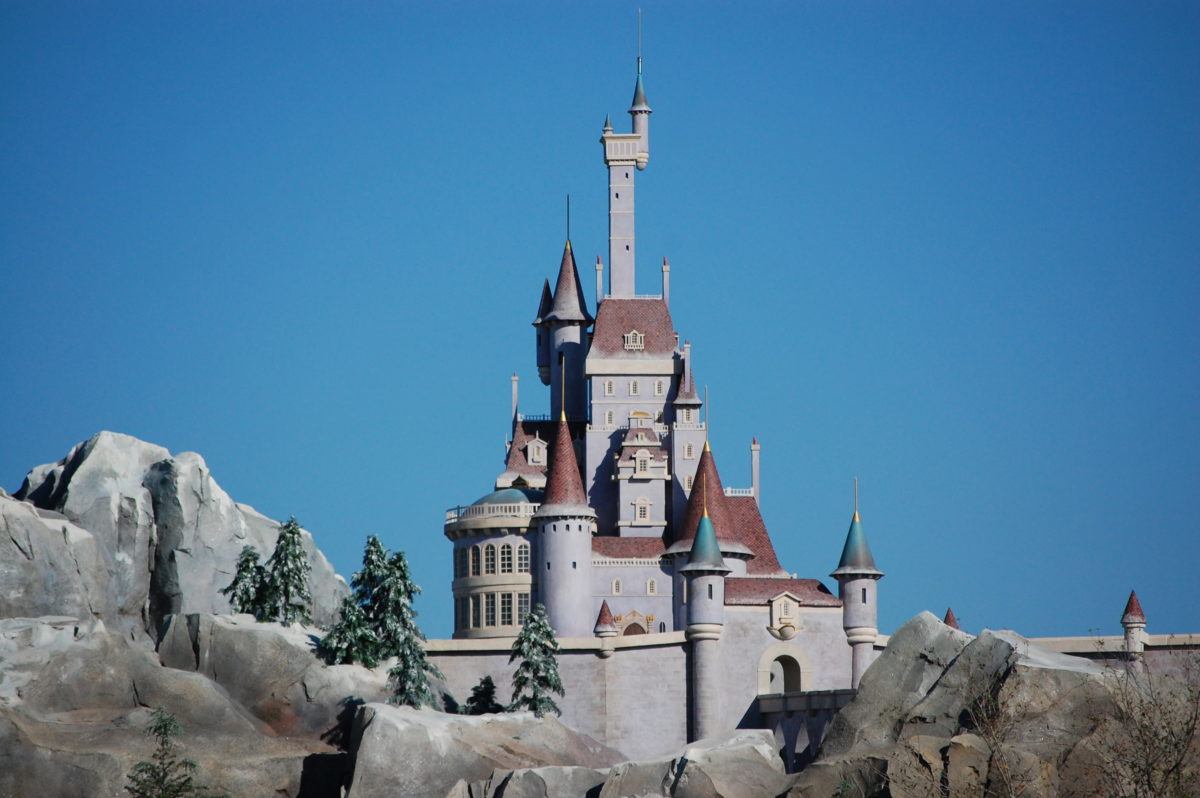People tend to analyze Disneyland as a thematic treatment of America and American mythology – which is definitely an accurate reading – and the optimistic point of view is often characterized more as like a tone or even a flaw. But sitting here this morning listening to Put on your Sunday clothes (a song that plays on Main Street and about relentless aspiration) it’s occurring to me that perhaps even more than American mythology optimism itself IS the theme of Disneyland. It runs through every land and every attraction and is reflected back at us through various lenses (namely American, white, upper middle class lenses). In fact I think the general critique so often heard might be exactly backward: that the theme of Disneyland isn’t about America with an overly optimistic lens it’s about optimism with an overly American lens. And that its flaws (if they are to be considered flaws) come from that.
Each land in the park reflects a distinct period of either history or culture where optimism and hope for a better tomorrow are at its zenith, at least from that lens. That IS the common thread. We enter Main Street USA right at the turn of the century – a period before the depression and before the World Wars where the marvels of technology are making life better on what seems a daily basis. Where steam trains carry us off onto exciting destinies, where everything is colorful and rosy, architecture is over the top, and people wear their Sunday best every day. People in this sleepy town coming into its own dream of the people they’ll be one day, the things they will achieve, the wondrous things that await them, and whadaya know at the far end of the street a shimmering castle beckons them forward towards their dreams – a symbol of things to come.
At the hub a series of adventures await us – each a microcosm of the same story. In Adventureland a “untamed” jungle is awaiting man to conquer it, unveil it’s riches and/or unveil itself as the tropical paradise it was always meant to be. A similar story awaits in Frontierland where the promise of manifest destiny is new, gold awaits, and the horizon is limitless. In New Orleans Square it’s a party all the time and a reflection of the promise of the west, both a realization and one of the last stepping off points before the frontier. In Walt Disney World this theme is even better reflected as Liberty Square and revolutionary America is swapped in – another era in which fears and darkness are cast off in favor of a new vision of what a better tomorrow could look like. On the other side of the hub, a literal vision of tomorrow, Tomorrowland reflects what Main Street might look like in hundreds of years: technology has fulfilled it’s promise, no one wants for anything, the world and universe are at peace, convenience and leisure are everywhere, and all sorts of transportation are waiting to whisk you off to literally anywhere you please. And finally Fantasyland, usually the hardest land to fit into the “americana” interpretation, fits perhaps most with the optimistic and hopeful theme and is fittingly at the heart of the park. Here we see a land inhabited by characters with often terrible pasts, overcome them and achieve their dreams. Snow White and Dumbo overcome abuse and trauma. Peter Pan teaches children to fly, an archetypal metaphor, and hold onto their childhood. Mr. Toad has crazy fun with friends, Pinocchio and Geppetto get their wish and overcome heartache and fear and loneliness. Alice escapes the doldrums of victorian life, etc, etc. And off in the back corner of the park, which I’m sure if it had been designed from day one, would have laid straight back from the castle: the end of the yellow brick road as it were, lies a monument towards optimism, cooperation, and a better tomorrow again in the form of “it’s a small world.” It’s telling us that to achieve the dreams of the future it will take all of us uniting together.
Disneyland and the Magic Kingdom therefore are really embodiments of the Disney ethos of their time: a strong conviction that the world is an exciting amazing place and no matter how bad things might have been or look to you now, a great big beautiful tomorrow lies just a dream away. And notably, that it’s up to us as a whole to take us there. The lands not only celebrate optimism but human achievements in realizing that optimism – whether it’s man conquering the jungle or frontier, the creation of a modern democracy, or characters escaping their haunting pasts. The park even tells us that death isn’t to be feared but enjoyed! (The haunted mansion). Perhaps it’s no surprise that these parks are more popular than ever before, given the world we find ourselves living in at the moment.
The flaws in the park’s treatment then, aren’t the optimism itself, but rather the somewhat outdated, very white, very American, very classed stories it chooses to tell – particularly on the western side of the park (and perhaps with its historic coziness with monopolistic corporations as well) that were only optimistic and pleasant for the people who wrote the history. For the time they might have been appropriate given the audience they were designed for, but today some of the implications can make you a bit uneasy. I’d still hold that the bones are good, that those settings can still reflect themes of optimism while becoming more aware and inclusive, and indeed over time we’ve seen very slow changes to that effect. For example, Thunder Mountain – while initially perhaps a glorification of gold mining has over time with various story changes become more and more of a morality play about what happens to those who are reckless in their pursuit of profit – something a certain company might take a lesson from. I for one, as perhaps one of the more obvious examples, would love to see what a Disneyland would look like with stories of the immigrant experience of the same time period paralleling those on Main Street. At any rate, like America, Disneyland is flawed, but it’s themes are solid. Optimism, hope for the future, and the responsibility to foster that future, are the themes that lie at the heart of the stories it tells and why people keep coming back.
P.S. This again reinforces the idea that I think Joe Rohde first articulated: that theme parks NEED themes in the literary sense to achieve their full potential and be effective: that that is what separates the good from the bad park executions, and Disneyland in particularly is a great example of what occurs when nearly every element of the experience serves to reinforce and drive home a particular message.




